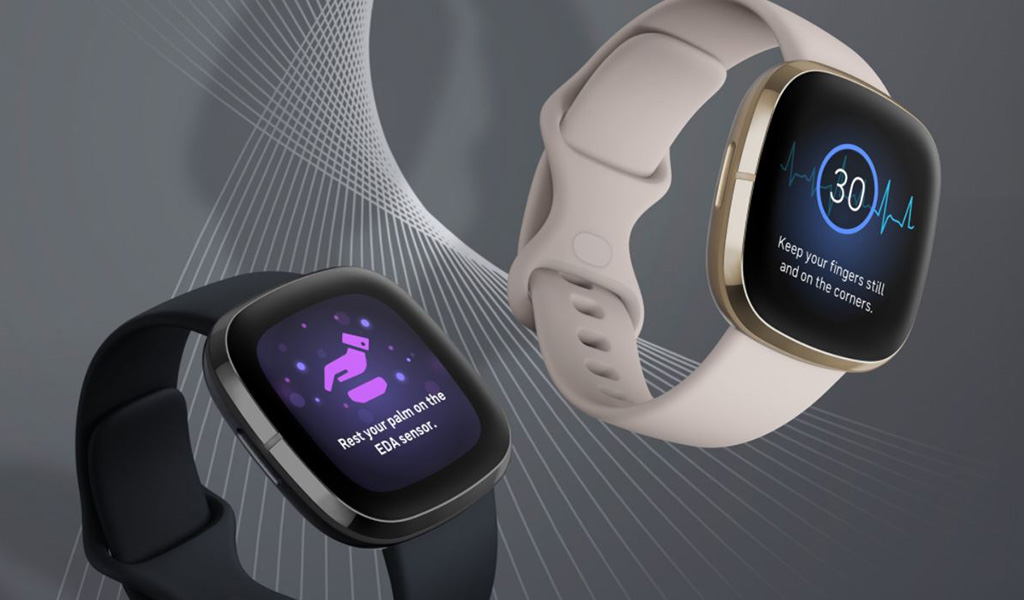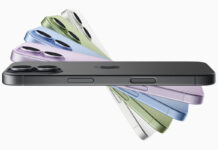
A smartwatch is designed to make it easier to keep track of your digital life, both as an extension of your smartphone and a complement to your activity.
The landscape is pretty varied, as it can depend on which platform you go with, but the use cases are pretty standard. You’re not getting a smartwatch just to tell time—a regular watch can do that just fine. You’re looking for a smarter watch that can keep you notified, track your activity and integrate with some of the apps you use most.
What smartwatches do
The concept of a smartwatch is to have a small computer—or a phone—wrapped around your wrist. That means, beyond telling you the time, they can bring up notifications from your phone, so you can see who called, messaged or emailed. They can track simple activity, like steps and calories, or in some instances, workouts, runs and sleep patterns.
They generally stay connected to smartphones via Bluetooth or Wi-Fi, with information bridged between them. In some cases, the watches may have their own LTE connection, thereby limiting the need to carry a phone in certain situations.
You may not think about it, but consider, just for a moment, how many times you pull your phone out of your pocket. How often you do it just to see a text or app notification that you felt from a vibration or heard a tone could be numerous. Smartwatches are designed to reduce your need to do that.

Watch on the go
Not all smartwatches are exactly the same. You may have one model more focused on fitness, while another is more fashion-forward with limited tech. That gives you some level of choice into how integrative you want to be.
For example, if you want something that does a lot, consider a dedicated smartwatch from companies like, Apple, Samsung and Fitbit. These are largely app-driven, with the ability to do a little more than just get notifications. If your watch supports a mapping app, you can see turn-by-turn directions on your wrist. You can track an Uber vehicle’s arrival, or check the score of a game you’re following.
Set a reminder or confirm a calendar entry without having to pull out your phone. In some instances, you can also respond to incoming messages with canned responses. Or even respond using your voice.
Some watches, like those from Garmin, are very activity-focused, including models dedicated to golfing. Others may be for runners who want to be able to track their routes and other key metrics every time.
If you want something a little more fashionable, albeit without all the tech you see in other smartwatches, brands like Fossil and Citizen have those covered. Some of these watches vary in sophistication, with more advanced features, whereas others are hybrid models that incorporate some analog features into them.
Fitness and activity
 Smartwatches are generally equipped with the sensors and components to track your activity. Motion sensors and heart rate monitors can track activity and beats per minute as part of a wider view of your active lifestyle. They even pipe up with reminders to get moving when you’ve been sedentary for too long.
Smartwatches are generally equipped with the sensors and components to track your activity. Motion sensors and heart rate monitors can track activity and beats per minute as part of a wider view of your active lifestyle. They even pipe up with reminders to get moving when you’ve been sedentary for too long.
When paired with a phone, you have GPS tracking to measure distance on every run, jog or walk you go on. Watches with LTE connectivity or built-in GPS can do all that without carrying a phone at all. Running a route can be a lot lighter if you’re not holding extra weight. Water-resistant bodies on some models mean your swimming reps are also trackable, giving you an idea on how good the exercise is in the pool.
Watches do differ on how extensive they are in tracking these things. Dedicated ones will do more than hybrid ones. Running and GPS watches are made for outdoor activity. Hybrid watches made to look like regular wristwatches can still track your daily activity.
Tracking health
 Smartwatches continue to advance when it comes to the kind of health features they bring to your wrist. Activity tracking is standard, but they can dig deeper than that. A pulse oximeter (SpO2) sensor can measure blood oxygen. A skin temperature sensor might be able to provide clues on whether you’re coming down with an illness.
Smartwatches continue to advance when it comes to the kind of health features they bring to your wrist. Activity tracking is standard, but they can dig deeper than that. A pulse oximeter (SpO2) sensor can measure blood oxygen. A skin temperature sensor might be able to provide clues on whether you’re coming down with an illness.
Now that electrocardiogram (ECG) features are approved (by Health Canada) for select smartwatches, you can test for a heart arrhythmia, in case of an irregular heartbeat. Sleep tracking is getting better, with the ability to not only track how long you’ve been asleep, but also how well you slept. Even for women’s health, there are ways to track menstrual cycles and more.
These health tracking features, while impressive, aren’t substitutes for doctor’s visits and medical advice. The data can be useful to show to a doctor who might be able to glean some insight from it.
Playing music from your wrist

Your smartwatch can be your playback device, controlling music without even looking at your phone. When paired with your phone, play, pause, skip or repeat tracks from your watch’s display. If there is direct app integration, like with Spotify or Apple Music, for example, you can select playlists and navigate for what you want to play.
You can even take this further with certain models that have their own internal storage. In those instances, you can store tracks on the watch itself. Pair with Bluetooth headphones and you have music that cuts the phone out of the equation. Certain watches may also allow you to store music offline from streaming services. For instance, Spotify Premium subscribers can listen to content offline, and if your watch allows for it, it enables you to play music without the phone. That’s pretty convenient if you’re going for a workout or just need a break from looking at your phone screen.
Payments and travel
When your smartwatch has NFC built-in, there’s a good chance you can use it to pay for stuff like tapping a card. This is usually a feature specific to the most advanced smartwatches, since they also have the app support to manage it.
The beauty of having it is that you can use it while travelling, too. Whether it’s support for Apple Pay, Google Pay or Samsung Pay, waving your wrist at the point-of-sale can cut down a lot of cumulative time.
You won’t find it in GPS and running smartwatches, nor in hybrid models, so it’s not a widespread feature yet. Despite that, it’s growing in sophistication and is expected to get better and faster.
Make it your own
 Like any other watch, smartwatches usually have the flexibility to change bands. Some will use proprietary lugs for straps, whereas others are entirely standard, meaning you can use any band from any watch that fits.
Like any other watch, smartwatches usually have the flexibility to change bands. Some will use proprietary lugs for straps, whereas others are entirely standard, meaning you can use any band from any watch that fits.
Bands and straps come in a variety of colours and materials, allowing you to switch from a rubberized band for exercise, to a metal or leather one on a night out. With the Apple Watch, particularly, there are screen protectors and cases to change the look and protect it all at once.
The right smartwatch for you
As an accessory to your phone, a smartwatch can be a useful addition that gives you more convenient control. Selecting the right one depends on what your priority is. If you are looking for something heavier on fitness and being active, your choices vary between the most popular models and GPS or running watches.
If you’re looking for something that is fashionable from makers known for style, you can still get active tracking. That way, you would be wearing something that looks like any other wristwatch, yet does more under the hood. Paired with the right app on your phone, you would have a clearer picture of your digital life. To learn more about the features of smartwatches, read the buying guide.
For the latest smartwatches, check out what’s available here.
For smartwatch accessories, take a look here.


